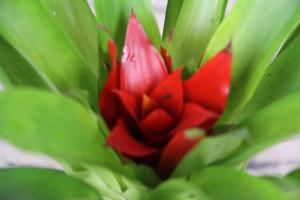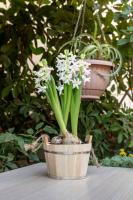How Far Apart to Plant Olive Trees
Olive trees not only produce delicious, healthy fruit but are also a beautiful addition to any landscape. Whether you are planting them as a commercial crop or as ornamental trees in your backyard, it is important to space them properly. So, how far apart should you plant olive trees?
The Importance of Correct Spacing
Planting olive trees too close together can lead to overcrowding, which can cause a host of problems. Overcrowding can stunt tree growth, compete for resources, and produce fewer fruits. Conversely, spacing olive trees too far apart can leave precious land unused and reduce yield per acre. Proper spacing is crucial for an optimal harvest and overall tree health.
Determining Spacing Factors
The optimal distance between olive trees depends on various factors, including:
Tree species and variety
Soil and climate conditions
Planting method and pruning technique
Desired growth habit and yield
By taking these factors into account, farmers and homeowners can determine the best spacing for their trees.
Recommended Spacing for Olive Trees
As a general rule, the recommended distance between olive trees is between 16 and 20 feet. This spacing allows each tree to receive sufficient light, water, and nutrients without being crowded or competing with other trees. However, this spacing may vary depending on the tree variety and planting method:
For traditional olive orchards, trees are planted in rows, with a distance of 20 to 30 feet between rows and 16 to 20 feet within rows.
For high-density olive orchards, trees are planted closer together, with a spacing of 10 to 12 feet between rows and 6 to 8 feet within rows.
For ornamental purposes, the spacing may vary depending on the desired growth habit and overall aesthetic of the landscape.
Additional Tips for Planting Olive Trees
Aside from spacing, there are several other factors that can affect the growth and productivity of olive trees:
Choose a location with full sun exposure and well-drained soil. Olive trees prefer warm, arid climates but can tolerate some cold and humidity.
Prepare the soil by removing weeds, tilling, and adding organic matter. Olive trees require a pH range of 5.5 to 7.5 and do not tolerate waterlogged or highly salty soils.
Plant olive trees in the late fall or early spring when soil temperatures are optimal for root growth. Container-grown trees can be planted year-round.
After planting, water the trees thoroughly and regularly until they become established. Once established, olive trees are drought-tolerant and require minimal watering.
Prune olive trees regularly to maintain their shape, remove suckers and deadwood, and promote airflow and light penetration within the canopy.
Conclusion
The spacing of olive trees is a critical factor in tree health, yield, and overall productivity. By considering various factors such as tree species, planting method, and pruning technique, farmers and homeowners can determine the optimal spacing for their trees. For best results, it is also essential to choose a suitable location, prepare the soil properly, and care for the trees regularly.

 how many times do yo...
how many times do yo... how many planted tre...
how many planted tre... how many pine trees ...
how many pine trees ... how many pecan trees...
how many pecan trees... how many plants comp...
how many plants comp... how many plants can ...
how many plants can ... how many plants and ...
how many plants and ... how many pepper plan...
how many pepper plan...































